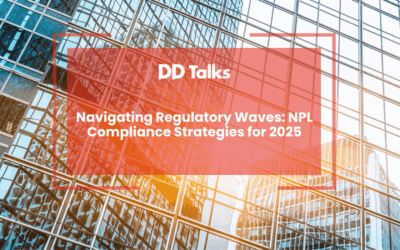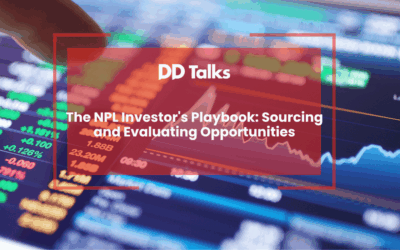Essential Insights for NPL Real Estate Investors
- NPL portfolios offer significant value through discounted acquisitions, with regional variations across Europe creating diverse investment opportunities.
- Successful NPL investing requires specialized valuation approaches, including detailed asset-by-asset analysis and scenario modeling with higher discount rates than traditional real estate.
- Risk management is critical, particularly regarding legal complexities, property condition uncertainties, and market timing considerations.
- Value creation stems from strategic resolution approaches, physical rehabilitation, operational optimization, and carefully timed exit strategies.
- Future success in NPL investing will depend on embracing digital transformation, sector specialization, ESG integration, and navigating cross-border capital flows.
Table of Contents
- Understanding NPL Portfolios in Real Estate Markets
- How Do Non-Performing Loans Create Investment Opportunities?
- Valuation Strategies for Distressed Real Estate Assets
- Risk Management in NPL Real Estate Investments
- Executing Successful NPL Acquisition Strategies
- From Distress to Success: Value-Add Transformation Methods
- Legal and Tax Considerations for NPL Real Estate Investors
- Future Trends in Distressed Real Estate Investing
Understanding NPL Portfolios in Real Estate Markets
Non-performing loan (NPL) portfolios represent a significant opportunity in European real estate markets. These portfolios consist of loans where borrowers have failed to make scheduled payments for 90 days or more, causing banks to classify them as non-performing assets. In the post-financial crisis landscape, European banks have been under regulatory pressure to clean up their balance sheets, creating a robust market for NPL transactions.
The European NPL market varies significantly by region. Southern European countries like Italy, Spain, and Greece maintain higher NPL ratios compared to northern counterparts such as Germany and the Netherlands. This regional disparity creates diverse investment landscapes with varying risk-reward profiles. For instance, Italian NPLs often trade at steeper discounts due to lengthy foreclosure processes, while German NPLs might command higher prices reflecting stronger underlying property fundamentals.
NPL portfolios typically include a mix of residential, commercial, and mixed-use properties. Understanding the composition of these portfolios is crucial for investors seeking to specialise in distressed real estate investing. Commercial NPLs might include office buildings, retail spaces, or industrial properties, while residential NPLs encompass single-family homes, apartment buildings, and condominium units. The diversity within these portfolios allows investors to target specific asset classes aligned with their expertise and market outlook.
How Do Non-Performing Loans Create Investment Opportunities?
Non-performing loans create compelling investment opportunities through several distinct mechanisms. Primarily, banks and financial institutions face regulatory pressure to reduce their NPL exposure, often leading them to sell these assets at significant discounts to face value. This discount-to-intrinsic-value creates an immediate equity cushion for savvy investors who understand the underlying real estate markets and can accurately assess property values.
The “loan-to-own” strategy represents one of the most direct approaches to NPL real estate investing. Investors acquire the non-performing debt with the strategic intention of eventually taking ownership of the underlying property through foreclosure or negotiated settlements. This approach allows investors to effectively acquire properties below market value, particularly in cases where the outstanding loan balance exceeds the current property value.
Distressed debt restructuring offers another avenue for value creation. Rather than pursuing foreclosure, investors may work with borrowers to modify loan terms, potentially extending maturities, reducing interest rates, or forgiving portions of principal. This collaborative approach can yield positive outcomes for all parties—borrowers maintain ownership, while investors secure performing assets with attractive yields. The restructuring process requires sophisticated negotiation skills and deep understanding of both real estate markets and financial structures.
Market inefficiencies further enhance NPL investment opportunities. Information asymmetry often exists in distressed real estate markets, where local knowledge and specialised expertise can uncover hidden value. Investors with superior due diligence capabilities can identify portfolios where banks have applied overly conservative valuations or failed to recognise improvement potential in underlying properties.
Valuation Strategies for Distressed Real Estate Assets
Accurate valuation forms the cornerstone of successful NPL real estate investing. Traditional valuation methods must be adapted to account for the distressed nature of these assets. The discounted cash flow (DCF) approach remains fundamental but requires adjustments to reflect extended holding periods, higher renovation costs, and increased uncertainty. Investors typically apply higher discount rates to NPL-backed properties, often 200-400 basis points above rates used for performing assets, reflecting the additional risk and management intensity.
Comparative market analysis takes on added complexity when evaluating distressed assets. Rather than relying solely on recent transactions of similar properties, sophisticated investors develop adjustment matrices that account for distress factors, deferred maintenance, and occupancy challenges. This nuanced approach helps quantify the discount appropriate for distressed properties relative to stabilised assets in the same market.
Asset-by-asset valuation proves essential when assessing NPL portfolios. While banks might sell portfolios based on aggregate metrics like weighted average loan-to-value ratios, successful investors conduct granular analysis of each underlying property. This detailed approach identifies both hidden gems and potential pitfalls within diversified portfolios. For commercial properties, this includes thorough lease analysis, building condition assessments, and market positioning evaluations.
Scenario analysis represents another crucial valuation tool for NPL real estate investors. By modelling multiple potential outcomes—from quick settlements to protracted legal proceedings—investors can better understand risk-adjusted returns and capital requirements. This approach typically incorporates Monte Carlo simulations to account for the probability distribution of various outcomes, providing a more robust valuation framework than single-point estimates.
Risk Management in NPL Real Estate Investments
Effective risk management is paramount when navigating the complex landscape of NPL real estate investments. Legal risks represent one of the most significant challenges, particularly in jurisdictions with borrower-friendly foreclosure laws. Countries like Italy and Greece have historically presented lengthy judicial processes, sometimes extending beyond five years. Sophisticated investors mitigate these risks through comprehensive legal due diligence and by partnering with local experts who understand procedural nuances and potential acceleration strategies.
Property condition uncertainty poses another substantial risk. Unlike traditional real estate acquisitions, NPL investors often have limited access to properties prior to taking control. This information gap necessitates conservative underwriting assumptions regarding renovation costs and timelines. Leading investors address this challenge by building substantial contingency reserves into their financial models and developing relationships with specialised property management firms capable of quickly assessing and stabilising distressed assets.
Market timing risk warrants careful consideration, particularly as European real estate markets move through different cycles. Acquiring NPLs during market downturns can amplify returns, while purchasing near market peaks increases vulnerability to corrections. Prudent investors manage this risk through diversification across geographies and property types, alongside implementing hedging strategies when appropriate. Staggered acquisition timelines also help mitigate the impact of market fluctuations.
Operational risks emerge once properties are acquired through NPL resolution. These include managing potentially hostile occupants, addressing deferred maintenance, and navigating complex tenant situations. Successful NPL investors develop robust asset management capabilities or partner with specialised servicers equipped to handle these challenges. Clear operational protocols and escalation procedures ensure consistent handling of common scenarios while maintaining flexibility for unique situations.
Executing Successful NPL Acquisition Strategies
Successful NPL acquisition strategies begin with source cultivation. The most sophisticated investors develop direct relationships with financial institutions, special servicers, and regulatory bodies overseeing bank restructurings. These relationships provide early access to portfolio offerings, sometimes before formal marketing processes begin. In the European context, building connections with national bad banks—such as SAREB in Spain or NAMA in Ireland—has proven particularly valuable for accessing large-scale NPL portfolios.
Consortium approaches have become increasingly common for larger NPL portfolio acquisitions. By partnering with complementary investors, firms can pool capital resources and specialised expertise. Typical consortium structures pair financial investors providing capital with operating partners contributing asset management capabilities and local market knowledge. These arrangements require careful structuring of governance rights, fee arrangements, and exit mechanisms to ensure alignment of interests throughout the investment lifecycle.
Due diligence excellence distinguishes successful NPL investors from their less effective counterparts. The most rigorous processes combine quantitative analysis of loan documentation with qualitative assessment of property fundamentals. Leading firms develop proprietary scoring systems that rapidly evaluate key risk factors across hundreds or thousands of loans. These systems typically incorporate legal enforceability metrics, property condition estimates, occupancy status, and market liquidity factors to prioritise resources during compressed due diligence periods.
Pricing discipline remains essential when bidding on NPL portfolios. Competitive auction processes can drive prices beyond reasonable risk-adjusted return thresholds. Disciplined investors establish clear maximum bid parameters based on thorough underwriting and resist the temptation to chase deals beyond these limits. This approach may result in lower acquisition volume but typically delivers superior long-term performance. Successful bidders often identify specific sub-portfolios within larger offerings where they possess unique advantages or insights that justify premium pricing.
From Distress to Success: Value-Add Transformation Methods
Transforming distressed real estate assets acquired through NPL portfolios requires systematic value-add methodologies. The resolution strategy selection represents the first critical decision point. Investors must determine whether to pursue foreclosure, negotiate discounted payoffs, implement loan modifications, or sell the debt to third parties. This decision typically hinges on property fundamentals, borrower cooperation, and legal considerations. The most successful investors maintain flexibility, adapting their approach based on evolving circumstances rather than rigidly adhering to predetermined strategies.
Physical rehabilitation forms a cornerstone of value creation for properties acquired through foreclosure. This process ranges from addressing deferred maintenance to comprehensive repositioning. For residential properties, this might involve modernising outdated kitchens and bathrooms, improving energy efficiency, and enhancing curb appeal. Commercial properties often require more extensive interventions, including system upgrades, floor plan reconfigurations, and amenity enhancements to meet contemporary tenant expectations. Effective rehabilitation programmes balance improvement costs against potential value increases, focusing on modifications with the highest return on investment.
Operational optimisation presents another significant value-add opportunity. Many distressed properties suffer from inefficient management practices, including below-market rents, excessive operating expenses, and suboptimal tenant mixes. By implementing professional property management systems, investors can rapidly improve cash flow through rent normalisation, expense control, and occupancy improvements. For commercial properties, strategic leasing initiatives targeting complementary tenant combinations can substantially enhance property performance and investment returns.
Exit timing and methodology significantly impact overall investment performance. While some investors pursue quick stabilisation and disposition strategies, others implement longer-term hold periods to capture full value creation. The optimal approach depends on market conditions, capital structure considerations, and investor objectives. Regardless of timeline, successful exits require careful preparation, including professional marketing materials, proactive addressing of potential buyer concerns, and strategic timing to align with favourable market conditions.
Legal and Tax Considerations for NPL Real Estate Investors
The legal framework surrounding NPL real estate investments varies significantly across European jurisdictions, creating both challenges and opportunities for investors. Foreclosure processes represent perhaps the most significant variation, with timeframes ranging from months in creditor-friendly countries like the UK and Ireland to several years in jurisdictions like Italy and Greece. Recent legislative reforms in many Southern European countries have aimed to streamline these processes, though implementation remains uneven. Successful investors develop country-specific playbooks that account for these procedural differences and incorporate realistic timelines into their investment strategies.
Bankruptcy law intersections create additional complexity when dealing with insolvent borrowers. Different European countries maintain distinct approaches to creditor rights, automatic stays, and claw-back provisions. These variations can significantly impact recovery strategies and timelines. Sophisticated investors work with specialised legal counsel to navigate these complexities, often developing parallel strategies to address multiple potential bankruptcy scenarios. Understanding the priority of claims becomes particularly important when dealing with properties encumbered by multiple liens or subject to tax arrears.
Tax structuring represents a critical consideration for NPL real estate investments. The acquisition, holding, and disposition of distressed assets trigger various tax implications, including transfer taxes, property taxes, income taxes, and potential value-added tax liabilities. Optimal structures typically involve multi-layered approaches utilising appropriate corporate entities, partnerships, and sometimes specialised vehicles like Real Estate Investment Trusts where available. These structures must balance tax efficiency with operational flexibility and investor requirements.
Regulatory compliance has grown increasingly important for NPL investors, particularly following the implementation of enhanced anti-money laundering directives across the European Union. These regulations impose significant due diligence requirements regarding the source of funds and beneficial ownership structures. Additionally, investors acquiring substantial NPL portfolios may trigger competition authority reviews in certain jurisdictions. Proactive engagement with regulatory requirements through robust compliance programmes helps mitigate these challenges while maintaining transaction momentum.
Future Trends in Distressed Real Estate Investing
The European NPL landscape continues to evolve, with several emerging trends shaping future investment opportunities. Digital transformation is revolutionising the NPL market through advanced data analytics and artificial intelligence applications. These technologies enable more sophisticated portfolio screening, improved valuation accuracy, and enhanced asset management capabilities. Forward-thinking investors are developing proprietary algorithms that can rapidly analyse thousands of loans, identifying those with the highest value-creation potential based on property characteristics, legal status, and market conditions.
Sector specialisation is becoming increasingly prevalent as the NPL market matures. Rather than pursuing generalist approaches, many investors now focus on specific property types where they possess distinctive expertise. Retail NPLs, for instance, require specialised knowledge regarding repositioning strategies in the face of e-commerce disruption. Similarly, hotel NPLs demand operational expertise that differs substantially from office or residential requirements. This specialisation trend allows investors to develop deeper market insights and more effective value-creation methodologies within their chosen niches.
Environmental, Social, and Governance (ESG) considerations are rapidly gaining importance in distressed real estate investing. European regulations increasingly mandate energy efficiency improvements and carbon reduction measures, creating both challenges and opportunities for NPL investors. Properties requiring substantial sustainability upgrades may trade at deeper discounts, while those already meeting advanced standards command premium valuations. Leading investors now incorporate ESG assessment into their due diligence processes and develop specific value-add strategies focused on improving environmental performance.
Cross-border capital flows continue to shape the European NPL market. While local investors maintain advantages in certain jurisdictions, international capital increasingly targets distressed real estate opportunities across Europe. North American private equity firms have established significant European platforms, while Asian investors—particularly from China, Singapore, and South Korea—have demonstrated growing interest in European distressed assets. This internationalisation trend creates both increased competition and new partnership opportunities for established NPL investors. Those able to combine local expertise with access to global capital pools will likely maintain competitive advantages in this evolving landscape.
Frequently Asked Questions
What are NPL portfolios in real estate?
NPL (Non-Performing Loan) portfolios in real estate are collections of loans where borrowers have failed to make scheduled payments for 90 days or more. These portfolios typically include a mix of residential, commercial, and mixed-use properties that banks and financial institutions sell at discounts to clean up their balance sheets. The composition varies by region, with Southern European countries like Italy, Spain, and Greece having higher NPL ratios compared to Northern European countries.
How do investors make money from distressed real estate assets?
Investors make money from distressed real estate assets through several strategies: purchasing NPLs at significant discounts to face value, implementing “loan-to-own” approaches to acquire properties below market value, restructuring debt to create performing assets with attractive yields, exploiting market inefficiencies through superior due diligence, and adding value through physical rehabilitation and operational optimization of acquired properties. The discount-to-intrinsic-value creates an immediate equity cushion for investors who understand the underlying markets.
What are the main risks in NPL real estate investments?
The main risks in NPL real estate investments include: legal risks from lengthy foreclosure processes in borrower-friendly jurisdictions, property condition uncertainty due to limited access before taking control, market timing risk when real estate cycles shift, operational challenges with potentially hostile occupants or deferred maintenance, and regulatory compliance issues. Successful investors mitigate these risks through comprehensive due diligence, local partnerships, conservative underwriting, diversification, and robust asset management capabilities.
How do you value distressed real estate assets?
Valuing distressed real estate assets requires modified traditional methods: adjusted discounted cash flow (DCF) analysis with higher discount rates (200-400 basis points above performing assets), comparative market analysis with distress factor adjustments, granular asset-by-asset evaluation rather than portfolio-level metrics, and scenario analysis incorporating multiple potential outcomes. Sophisticated investors develop proprietary scoring systems that evaluate legal enforceability, property condition, occupancy status, and market liquidity to determine appropriate valuations.
What strategies help transform distressed properties into profitable investments?
Transforming distressed properties into profitable investments involves: selecting appropriate resolution strategies (foreclosure, discounted payoffs, loan modifications), implementing targeted physical rehabilitation focused on high-ROI improvements, optimizing operations through professional management and leasing strategies, and timing exits strategically. Successful transformation requires flexibility in approach, balancing improvement costs against potential value increases, and aligning exit timing with favorable market conditions.
How do legal and tax considerations vary across European NPL markets?
Legal and tax considerations vary significantly across European NPL markets. Foreclosure timeframes range from months in the UK and Ireland to several years in Italy and Greece. Bankruptcy laws differ in creditor rights, automatic stays, and claw-back provisions. Tax implications include varying transfer taxes, property taxes, income taxes, and VAT liabilities. Regulatory requirements have increased with enhanced anti-money laundering directives across the EU. Successful investors develop country-specific strategies and work with specialized legal counsel to navigate these complexities.
What future trends are emerging in distressed real estate investing?
Emerging trends in distressed real estate investing include: digital transformation through advanced data analytics and AI for portfolio screening and valuation, increased sector specialization rather than generalist approaches, growing importance of ESG considerations with regulatory mandates for sustainability, and evolving cross-border capital flows with international investors targeting European opportunities. Investors combining local expertise with access to global capital and embracing technological innovation will maintain competitive advantages in this evolving landscape.




0 Comments